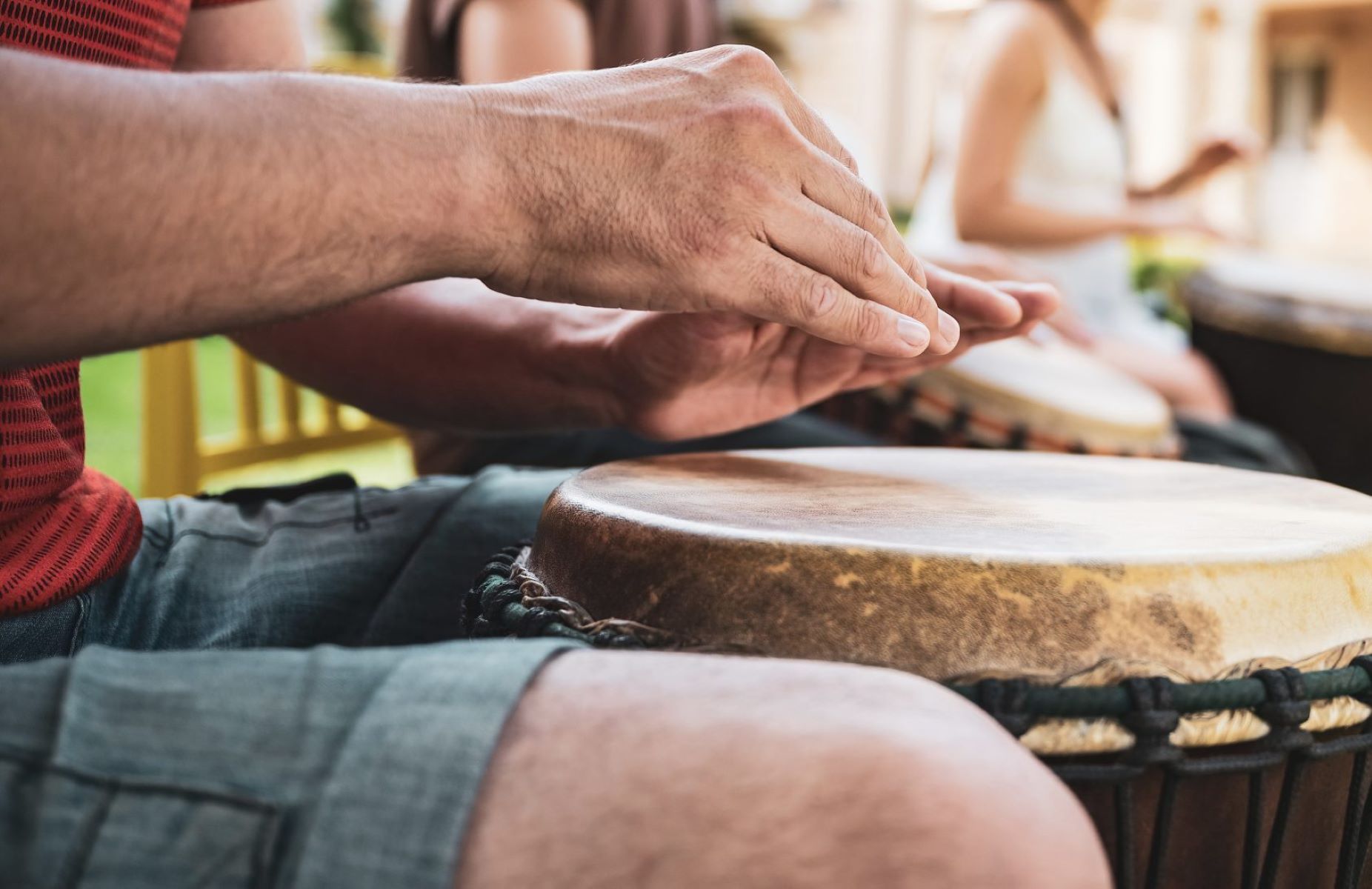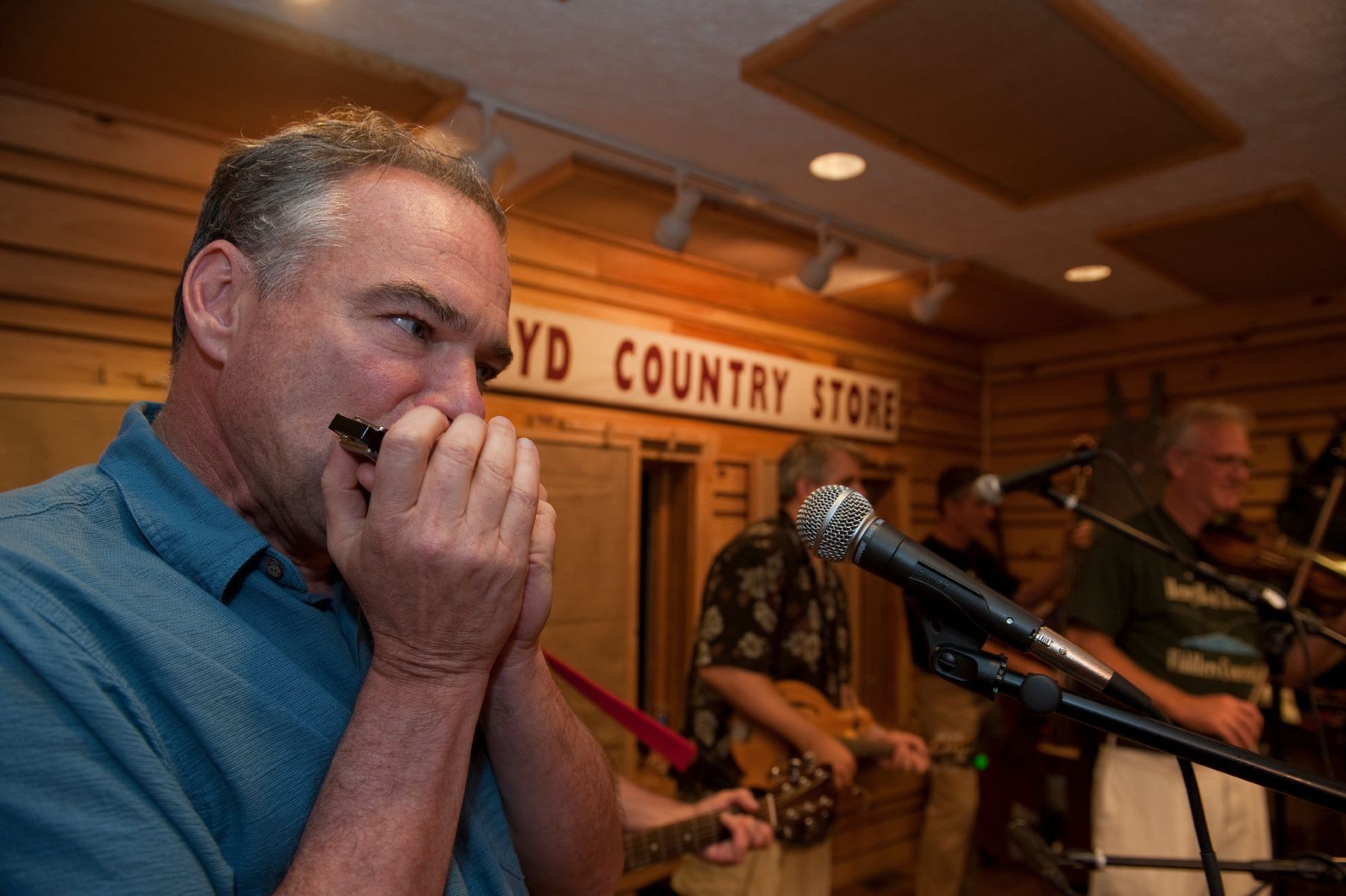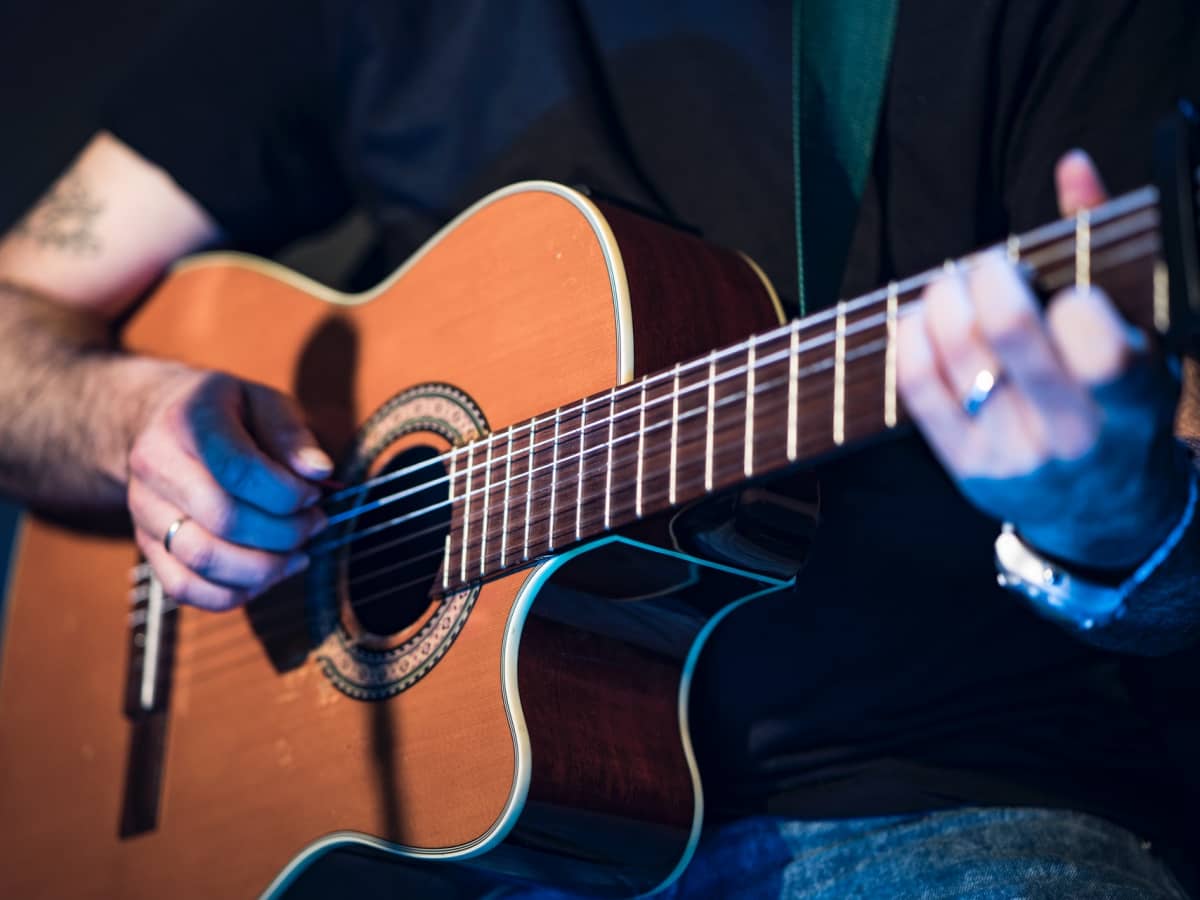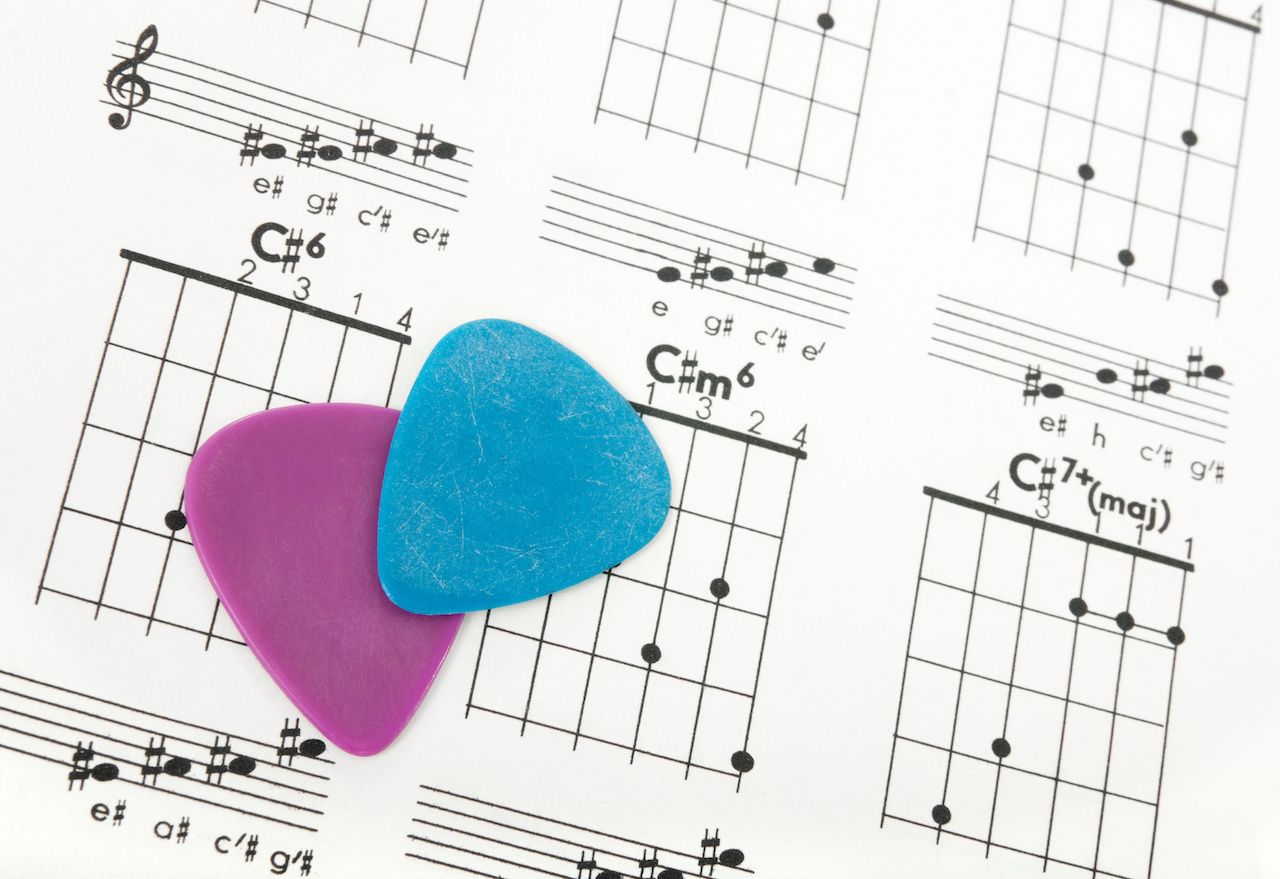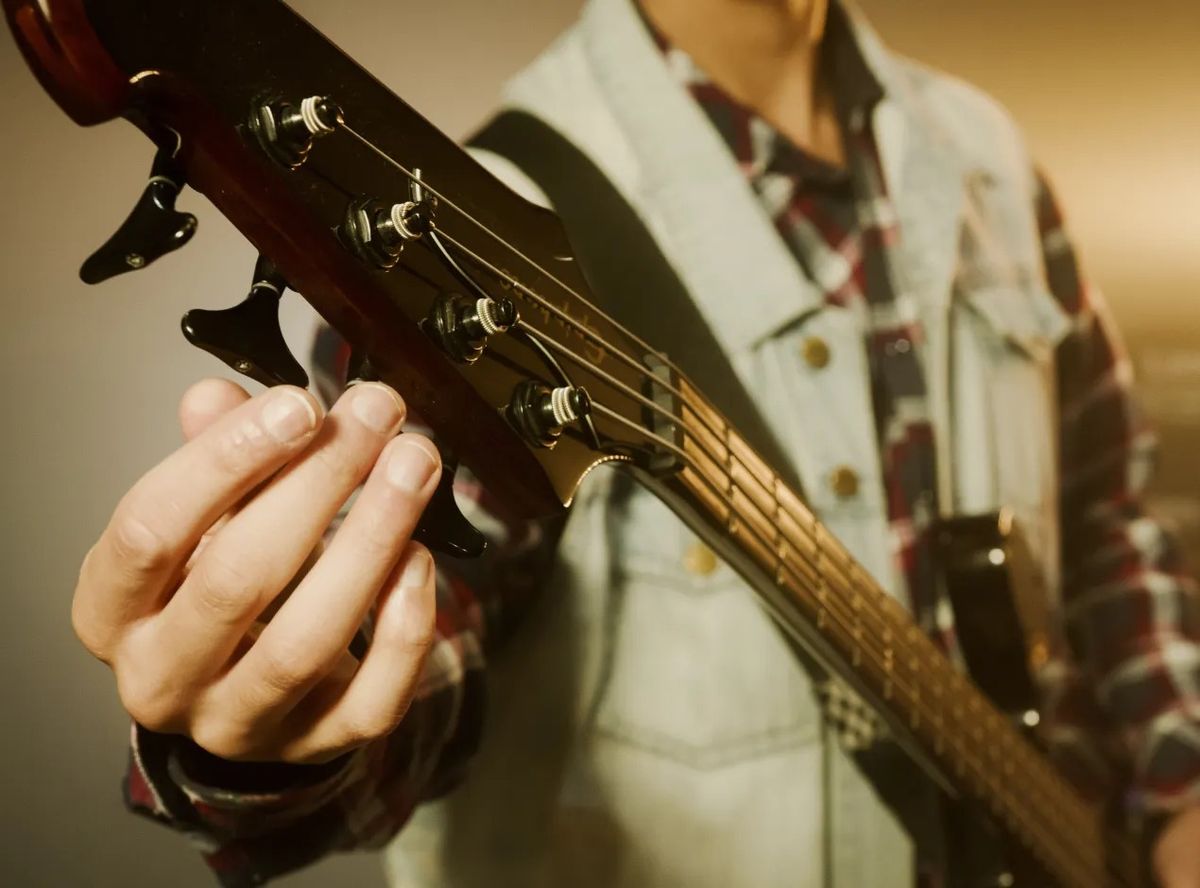Home>Instruments>Guitar>Learn How To Play Guitar For Beginners


Guitar
Learn How To Play Guitar For Beginners
Modified: February 16, 2024
Learn how to play guitar for beginners with our step-by-step lessons and expert tips. Start your musical journey today and master the art of playing guitar.
(Many of the links in this article redirect to a specific reviewed product. Your purchase of these products through affiliate links helps to generate commission for AudioLover.com, at no extra cost. Learn more)
Table of Contents
Introduction
So, you've decided to learn how to play the guitar. Congratulations! You're about to embark on a musical journey that can bring you immense joy and fulfillment. Whether you're drawn to the soulful sounds of acoustic folk music, the raw energy of rock and roll, or the smooth vibes of jazz, the guitar is a versatile instrument that can cater to a wide range of musical tastes.
Learning to play the guitar is a rewarding experience that offers numerous benefits. Not only does it provide a creative outlet for self-expression, but it also enhances cognitive abilities, improves hand-eye coordination, and can even serve as a form of stress relief. Additionally, being able to strum a few chords or play a memorable riff at social gatherings can make you the life of the party.
In this comprehensive guide, we'll take you through the fundamentals of playing the guitar, catering specifically to beginners. Whether you've just picked up a guitar for the first time or have been strumming aimlessly for a while, this guide will lay a solid foundation for your musical journey. We'll cover everything from choosing the right guitar to mastering basic chords and strumming techniques. By the end, you'll have the knowledge and confidence to start playing your favorite songs and continue advancing as a guitarist.
So, grab your guitar, find a comfortable spot, and let's dive into the wonderful world of guitar playing!
Choosing the Right Guitar
When venturing into the realm of guitar playing, one of the first crucial decisions you’ll face is choosing the right instrument. The type of guitar you select can significantly impact your learning experience and overall enjoyment. There are two primary categories to consider: acoustic and electric guitars.
Acoustic Guitars:
If you’re drawn to folk, country, or singer-songwriter genres, an acoustic guitar may be the perfect choice for you. These guitars produce sound acoustically by transmitting the vibration of the strings to the air, creating a rich and warm tone. Acoustic guitars are available in various body shapes, including dreadnought, concert, and parlor, each offering distinct tonal characteristics and playability. When selecting an acoustic guitar, consider factors such as body size, tonewood, and neck profile to ensure a comfortable and resonant instrument that suits your preferences.
Electric Guitars:
If your musical interests lean towards rock, blues, jazz, or pop, an electric guitar might be more fitting. Electric guitars rely on electronic amplification to produce sound and often feature thinner bodies for enhanced playability. They offer a wide range of tonal possibilities through different pickups, tone controls, and amplification setups. When choosing an electric guitar, factors such as body shape, neck profile, and the type of pickups (single-coil or humbucker) can influence your playing experience and the sounds you can achieve.
Ultimately, the right guitar for you will depend on your musical preferences, playing style, and budget. It’s essential to visit a music store and try out different guitars to assess their sound, comfort, and playability. Don’t hesitate to seek advice from knowledgeable staff or experienced guitarists who can guide you in making an informed decision. Remember, the perfect guitar is the one that resonates with you both musically and personally.
Understanding the Basics
Before diving into playing the guitar, it’s essential to familiarize yourself with its fundamental components. Understanding the basic anatomy of the instrument will not only facilitate your learning process but also enable you to communicate more effectively with other musicians and guitar enthusiasts.
Parts of the Guitar:
The guitar consists of several key elements, including the body, neck, headstock, fretboard, frets, bridge, and tuning pegs. Each part plays a crucial role in producing and shaping the instrument’s sound, as well as facilitating the player’s interaction with the guitar. Take the time to identify and become acquainted with these components, as it will lay a solid foundation for your journey as a guitarist.
Guitar Strings and Tuning:
The standard guitar has six strings, each tuned to a specific pitch. From the thickest string to the thinnest, the strings are tuned to E, A, D, G, B, and E, when in standard tuning. Learning to tune your guitar is a fundamental skill that directly impacts the sound and playability of the instrument. You can use a dedicated guitar tuner, a tuning app, or even tune by ear using a reference pitch. Keeping your guitar in tune is essential for producing pleasant sounds and enjoying the playing experience.
Fretting and Strumming:
When playing the guitar, you’ll use your fretting hand to press down on the strings against the frets, producing different pitches. The strumming hand, typically the right hand for right-handed players, is responsible for striking or plucking the strings to create sound. Developing dexterity and coordination in both hands is a crucial aspect of mastering the guitar.
By familiarizing yourself with these basic concepts, you’ll establish a solid groundwork for your guitar journey. As you progress, you’ll delve deeper into each aspect, honing your skills and understanding of the instrument. Remember, patience and persistence are key virtues in learning to play the guitar, so embrace the learning process and enjoy the musical discoveries that lie ahead.
Holding the Guitar
Proper posture and positioning are essential for effectively playing the guitar and avoiding discomfort or strain. Whether you’re seated or standing, the way you hold the instrument significantly impacts your playing technique and overall comfort.
Seated Position:
When sitting down, choose a chair without arms to allow for unrestricted movement. Rest the guitar on your right leg (for right-handed players) or left leg (for left-handed players), ensuring that the waist of the guitar rests comfortably on your thigh. Keep your back straight but relaxed, and position the guitar in such a way that allows you to easily reach the frets and strumming area without excessive strain.
Standing Position:
When playing the guitar while standing, using a guitar strap is crucial for maintaining a comfortable and stable playing posture. Adjust the strap to a length that positions the guitar at a height where your fretting hand can easily reach the fretboard without straining your wrist. Maintain a relaxed and upright posture, distributing the weight of the guitar evenly to avoid unnecessary strain on your shoulders and back.
Hand Placement:
As you hold the guitar, pay attention to the placement of your hands. Your fretting hand should lightly curve over the neck, with your thumb resting on the back of the neck for support. Avoid gripping the neck too tightly, as this can hinder your dexterity and lead to hand fatigue. Your strumming hand should hover comfortably over the soundhole or pickup area, ready to execute strumming or picking motions with ease.
By mastering the art of holding the guitar with comfort and ease, you’ll set the stage for a more enjoyable and productive practice session. Remember that finding a position that feels natural and allows for fluid movement is key. With consistent practice, holding the guitar will become second nature, enabling you to focus on honing your playing skills and musical expression.
Tuning the Guitar
Ensuring that your guitar is in tune is a fundamental aspect of playing that directly impacts the sound and playability of the instrument. Standard tuning for a six-string guitar, from the thickest string to the thinnest, is E, A, D, G, B, and E. There are several methods to tune your guitar effectively, catering to different preferences and skill levels.
Electronic Tuners:
Electronic tuners are popular tools for accurately tuning a guitar. They detect the pitch of each string and indicate whether it is tuned too low, too high, or in tune. Clip-on tuners, pedal tuners, and smartphone apps with built-in tuners are widely available and offer convenience and precision. Simply pluck a string, and the tuner will display the corresponding note, guiding you to adjust the tuning peg until the string matches the desired pitch.
Tuning Apps and Online Resources:
For beginners, tuning apps and online resources provide accessible and user-friendly options for tuning a guitar. These tools often include visual aids and audio cues to assist in achieving accurate tuning. Additionally, many online tuners allow you to hear the correct pitch for each string, helping train your ear to recognize and replicate the desired tuning.
Tuning by Ear:
While tuning by ear requires developing a good sense of pitch, it is a valuable skill that enhances your musical ear and intuition. You can start by using a reference pitch from a tuned instrument, a tuning fork, or a piano. By comparing the sound of each string to the reference pitch, you can adjust the tuning pegs accordingly. With practice, you’ll become more adept at tuning by ear, a skill that can be particularly useful in various musical settings.
Regardless of the method you choose, regular tuning is essential to maintain the integrity of your guitar’s sound and playability. It’s recommended to check the tuning of your guitar before each practice session or performance, as environmental factors and playing can cause the strings to go out of tune. By developing a keen ear and mastering the art of tuning, you’ll ensure that your guitar consistently produces harmonious and resonant sounds, setting the stage for an enjoyable playing experience.
Basic Chords
Chords are the building blocks of many songs and serve as the foundation for rhythm guitar playing. Mastering basic chords is a significant milestone for beginners, as it opens the door to playing countless songs across various genres. Here are some essential chords to kick-start your chord vocabulary:
- C Major (C): A fundamental open chord, the C major chord is formed by placing your ring finger on the third fret of the fifth string, middle finger on the second fret of the fourth string, and index finger on the first fret of the second string. Strum from the fifth string downward, avoiding the sixth string.
- G Major (G): The G major chord is a staple in many popular songs. Form this chord by placing your ring finger on the third fret of the sixth string, middle finger on the second fret of the fifth string, and pinky finger on the third fret of the first string. Strum all six strings for a full, resonant sound.
- D Major (D): To play the D major chord, position your index finger on the second fret of the third string, middle finger on the second fret of the first string, and ring finger on the third fret of the second string. Strum from the fourth string downward, omitting the sixth and fifth strings.
- E Minor (Em): This minor chord offers a melancholic and introspective sound. Place your index and middle fingers on the second fret of the fifth and fourth strings, respectively, and strum all six strings for a complete E minor chord.
These are just a few examples of the many chords you’ll encounter as a guitarist. As you delve into the world of chords, focus on achieving clean and clear sounds from each string, ensuring that your fingers are positioned correctly and not muting adjacent strings. Regular practice and repetition will help build muscle memory and finger strength, enabling you to transition smoothly between chords.
Remember, learning chords is a gradual process, and it’s normal to encounter challenges along the way. Stay patient and persistent, and celebrate the small victories as you expand your chord repertoire. With dedication and practice, you’ll soon find yourself strumming along to your favorite songs with confidence and joy.
Strumming Techniques
Developing proficient strumming techniques is essential for bringing rhythm and groove to your guitar playing. Strumming involves the deliberate motion of your strumming hand (usually the dominant hand for most players) across the strings, producing a rhythmic and percussive effect. Here are some fundamental strumming techniques to get you started:
- Downstrokes: Downstrokes involve strumming the strings in a downward motion, typically starting from the sixth string and moving towards the first string. This technique is foundational and is often used for emphasizing strong beats in a song’s rhythm.
- Upstrokes: Upstrokes, as the name suggests, involve strumming the strings in an upward motion, starting from the first string and moving towards the sixth string. Upstrokes are commonly used to add accents and dynamics to a song’s rhythm, especially on the off-beats.
- Strumming Patterns: Strumming patterns dictate the rhythmic structure of a song and play a vital role in creating its feel and energy. Common strumming patterns include the “down, down, up, up, down” pattern and variations thereof. Experiment with different strumming patterns to enhance the dynamics and groove of your playing.
- Dynamic Control: Mastering dynamic control allows you to vary the intensity and volume of your strumming, adding depth and expression to your playing. Practice transitioning smoothly between soft, subtle strums and more forceful, accented strums to convey emotion and musical nuance.
As you delve into strumming techniques, focus on maintaining a relaxed and fluid motion with your strumming hand. Avoid tensing up, and strive for a consistent and even sound across all strings. Additionally, pay attention to the placement of your strumming hand, ensuring that you’re not inadvertently muting strings or creating unintentional noise.
Remember, developing proficient strumming techniques takes time and patience. Set aside dedicated practice sessions to focus on refining your strumming skills, and don’t be afraid to experiment with different rhythms and dynamics. With consistent effort and an open-minded approach, you’ll soon find yourself grooving along to your favorite songs with confidence and flair.
Playing Simple Songs
Once you have familiarized yourself with basic chords and strumming techniques, you’re ready to embark on the exciting journey of playing simple songs on the guitar. Learning to play songs not only reinforces your understanding of chords and rhythm but also provides a sense of accomplishment and joy as you bring familiar melodies to life. Here are some steps to guide you as you begin playing simple songs:
- Selecting Songs: Choose songs that feature a manageable number of chords and a straightforward strumming pattern. Look for popular tunes that resonate with you and align with your current skill level. Folk, pop, and rock songs often contain simple chord progressions ideal for beginners.
- Chord Transitions: Practice transitioning between chords smoothly and efficiently. Start by isolating chord changes within a song and repeating the transitions until they become fluid. Gradually increase the tempo as you gain confidence in switching between chords.
- Rhythm and Strumming: Pay attention to the song’s rhythm and strumming pattern. Listen to the original recording of the song to internalize its groove and feel. Experiment with different strumming patterns to find one that complements the song and enhances its musicality.
- Singing Along: If you enjoy singing, consider incorporating vocals as you play. Singing along to the chords and melody can help reinforce your sense of timing and phrasing, as well as deepen your connection to the music.
As you delve into playing simple songs, keep in mind that patience and persistence are key. It’s natural to encounter challenges, especially when tackling new chord progressions and coordinating vocals with guitar playing. Embrace the learning process, celebrate your progress, and maintain a positive attitude towards overcoming obstacles.
Moreover, don’t shy away from exploring songs beyond your comfort zone. While it’s important to start with manageable tunes, venturing into slightly more complex songs can fuel your growth as a guitarist and expand your musical repertoire. The satisfaction of mastering a new song and sharing it with others can be a powerful motivator on your musical journey.
Remember, the goal of playing simple songs is not perfection but rather the joy of making music. Embrace the imperfections, express yourself through the songs you play, and revel in the sheer pleasure of creating music with your guitar.
Practicing and Progressing
Consistent and focused practice is the cornerstone of progress in learning to play the guitar. By establishing a structured practice routine and embracing a growth-oriented mindset, you can enhance your skills, expand your musical repertoire, and cultivate a deeper connection with the instrument. Here are some strategies to guide your practice sessions and facilitate continuous improvement:
- Set Clear Goals: Define specific, achievable goals for your guitar playing. Whether it’s mastering a particular chord progression, improving fingerpicking dexterity, or learning a new song, having clear objectives provides direction and motivation for your practice sessions.
- Structured Practice Sessions: Organize your practice time into focused segments, each targeting different aspects of playing, such as chord transitions, scales, strumming patterns, and song repertoire. Allocate dedicated time for warm-ups, technical exercises, and learning new material.
- Patience and Persistence: Embrace the journey of improvement with patience and persistence. Progress may unfold gradually, and it’s essential to acknowledge the incremental advancements you make along the way. Stay committed to consistent practice, even during periods of frustration or plateau.
- Explore New Techniques: Continuously expand your skill set by exploring new techniques and musical styles. Experiment with fingerstyle playing, arpeggios, barre chords, and improvisation to broaden your musical horizons and maintain a sense of curiosity and creativity.
- Record and Reflect: Use recording tools to capture your practice sessions and performances. Reviewing recordings allows you to identify areas for improvement, track your progress over time, and gain valuable insights into your playing style and musical expression.
Furthermore, seek inspiration from accomplished guitarists, attend live performances, and engage with fellow musicians to stay motivated and invigorated in your musical pursuits. Surrounding yourself with a supportive and encouraging musical community can fuel your passion for playing and provide opportunities for collaboration and growth.
Remember, the journey of learning to play the guitar is as much about self-discovery and personal expression as it is about technical proficiency. Embrace the challenges, celebrate your achievements, and savor the joy of creating music with your instrument. With dedication, perseverance, and a love for the craft, you’ll continue progressing and evolving as a guitarist.
Conclusion
Congratulations on embarking on your guitar playing journey! As you’ve delved into the fundamentals of the instrument, from selecting the right guitar to mastering basic chords and strumming techniques, you’ve laid a solid foundation for your musical pursuits. Learning to play the guitar is a fulfilling and enriching experience that offers a myriad of rewards beyond mastering notes and chords.
As you progress on your musical path, remember that the essence of playing the guitar lies in the joy of creating music and expressing yourself through the instrument. Embrace the learning process with patience and an open mind, and allow yourself the freedom to explore diverse musical styles and techniques that resonate with your artistic sensibilities.
Furthermore, cherish the moments of self-discovery and musical growth as you practice and refine your skills. Each chord mastered, each strum perfected, and each song learned contributes to your evolution as a guitarist. Embrace the imperfections and relish the sheer pleasure of making music with your guitar.
Lastly, stay connected with a community of fellow musicians, seek inspiration from diverse sources, and remain open to new learning opportunities. The camaraderie and shared passion within the musical community can fuel your creativity and provide invaluable support on your journey.
As you continue honing your craft, remember that the most significant progress often unfolds gradually, and each step forward is a testament to your dedication and perseverance. Embrace the process, celebrate your achievements, and revel in the transformative power of music in your life.
With your newfound knowledge and a spirit of curiosity and determination, you are well-equipped to continue your guitar playing odyssey with confidence and enthusiasm. Embrace the music, embrace the journey, and let the guitar be your faithful companion in the symphony of your life.




